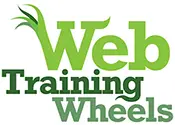Increase Traffic and Improve SEO Using Google Search Console
Now that you’re all set up with Search Console and Analytics, let’s look at a couple of easy ways to improve your SEO and traffic using the information these tools provide.
We’re going to be working with the information in the Acquisition > Search Console tabs. On each page you’ll see these table headings (there are others, but these are the important ones for this guide):
Impressions: The number of times the page has been included in a search result. That includes when it’s on a page deep in the results which may not actually be viewed by the searcher.
Clicks: The number of times the page was clicked on from the search results
CTR: Click through rate – the percentage of clicks compared to impressions
Average position: The ranking of the page in the search results.
Note that the information provided does not represent the totality of your traffic. Google is still restrictive with the data, so what you see represents a snapshot of the overall picture of your website traffic.
Monitor your SEO progress
In Google Analytics, go to Acquisition > Search Console > Landing Pages
By default you should be seeing a list of pages sorted by number of impressions, with the most impressions at the top of the table. The pages with the most impressions may not necessarily have the highest ranking, but if they are showing up in a lot of searches, it means there is a lot of interest around those pages.
Right off the bat, I recommend reviewing this list and assessing whether it’s what you would expect. Are the pages with the most impressions the ones you expect and want to see?
Are important pages on your site missing or too low down the list? That could be an indicator that you need to review how or if you’ve optimized those pages.
The ones with the best average position are the ones that are seemingly the best optimized, or related to less competitive searches.
If you’re seeing pages listed which have decent impressions but are not getting high enough position, you can make efforts to help boost those specific pages, for example:
- Implementing a link building strategy
- Making sure the page has adequate internal links to it
- Promoting it on social media
If you have important pages that are getting very few impressions, it could be that you have to adjust which keywords you’re targeting to make it more desirable, or optimize better for your chosen keywords.
Which keywords are working for you?
Go to the Acquisition > Search Console >Queries tab
This shows you the search terms that your site is showing up for. A quick scan of the list will be enough to tell you what topics are of most interest to Googlers. This could give you some ideas for additional blog content.
If you sort by CTR, this will let you know where you have well-optimized content around a certain phrase.
Look for opportunities
Sorting by impressions and looking at phrases that get decent impressions but a low CTR will let you know that you don’t have a good content match for that phrase, or that it’s not well-optimized. In those cases you’ll also want to look at the average position. Poor performance could be due to a low average position, in which case you’ll want to try and boost those pages. A high average position with a low CTR could indicate that the content showing up for that phrase isn’t a close enough match for it. So that will let you know where you need to create additional and more targeted content.
Pages that receive a good number of impressions, but have a low average position means that there is interest around this topic, but you need to improve the ranking of those pages to capitalize on it.
Capitalize on your most clicked pages
In Analytics, go to Acquisition > Search Console > Landing Pages
Click on the Clicks heading to see which landing pages receive the most traffic.
For the pages that are performing well, make sure that you taking advantage of the traffic they’re getting. This could mean different things for your site and business model:
- Monetize the post – are there relevant affiliate links or ads on the page?
- Is it easily shareable on social media?
- Is it engaging?
- Is there an email sign-up? You could get more opt-ins by putting a content upgrade on these pages (that’s a special freebie related to the page’s content, provided to readers in exchange for their email address).
Create more content
In Analytics, go to Acquisition > Search Console > Landing Pages
Choose a specific page and click on it, then you will see some specific queries for that page.
Often you will see some queries show up which are related but perhaps not precisely addressed by the page itself. So you should make note of those and create more specific content to address them.
If you’re seeing queries you don’t think are particularly relevant you can review the content to better optimize it for what you do want it to rank for.
Improve CTR (click through rate)
In Analytics, go to Acquisition > Search Console > Landing Pages
Click on the impressions heading to see which pages get the most impressions. That means the ones that show up the most in results. Look for the pages that get a lot of impressions but few or no clicks. This means that something about the way it shows in the results is not enticing enough. Review the meta info – that is the title and description and tweak those to attract more clicks. Make sure the title and description are closely aligned with the content, and do a good job of “selling” the page to the reader.
You should pay special attention to those pages that show up on the first couple of pages of the search results. If a page gets an “impression” but the position is very low, it’s likely no one’s getting to that page in the search results.
By checking the Search Console information in your Analytics periodically, say every month, you should be able to track your progress over time and see the results of your SEO efforts.





